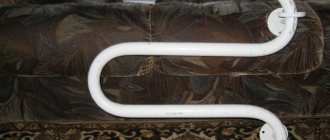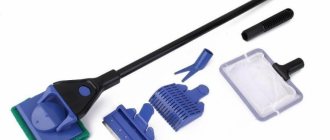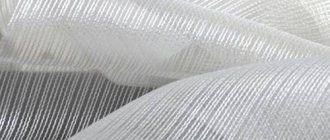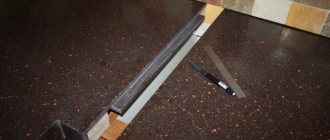When cleaning is necessary
A gas boiler is a complex device, and disassembling it without a good reason is too expensive. To avoid taking unnecessary actions that could cost you a pretty penny, check out a number of signs that indicate a clogged heating element:
- The boiler does not produce the required amount of heat, while consuming a large amount of fuel.
- During operation of the device, extraneous noise appears, the presence of which was not observed before.
- The water pressure from the tap decreases significantly.
- The heating process of the batteries is slower than usual.
Gas consumption has increased
One of the key reasons why gas consumption increases significantly compared to the norm is the clogging of the heat exchanger with scale. The boiler requires more fuel to heat the exchanger to the required level. After cleaning the part, the consumption returns to the basic values.
Burner always on
A clogged heat exchanger means that the water takes a long time to heat up, and the turbine constantly pumps in new liquid.
Because of this, the burner is constantly working, trying to bring the water temperature to the required value.
Descaling solves the problem, allowing the boiler to operate normally, without interruptions.
Rumble and interruptions in the operation of the circulation pump
A clogged system makes it difficult for fluid to circulate, causing the pump to overload during operation. Because of this, the following appear:
- extraneous noise;
- interruptions in the operation of the device;
- engine overheating.
Reduced pressure in the DHW circuit
A decrease in pressure in the DHW circuit is possible due to:
- incorrect operation of the heat exchanger;
- leaks in the pipeline system;
- The hot water supply circuit is depressurized.
Note! The above symptoms can occur not only due to the boiler being clogged with scale. This should be taken into account when diagnosing a fault.
Types of pollution
For the operation of a solid fuel boiler, raw materials are required, due to which the combustion process will be carried out. Firewood, coal, peat and pellets act in this capacity. Each type of raw material has its own advantages and disadvantages. A common property is that during operation of the boiler, combustion products are released, which gradually accumulate on the internal parts of the chamber.
There are three main substances that pollute a boiler. The presence of each of them is due to certain factors:
- soot. Appears when the temperature during combustion of raw materials is not high enough. This is also affected by a lack of oxygen;
- resin. As a rule, its occurrence is due to various problems with the fuel: it may be too wet or of poor quality. Or you simply loaded too much raw material into the combustion chamber. A negatively influencing factor is also insufficiently high temperature;
- tar. The appearance of this substance indicates possible problems with the equipment itself. Either errors have crept into the design of the boiler, or the chimney was made too short, or the air flow is pumped into the chamber too weakly - the last factor is relevant for pyrolysis equipment.
Someone might think that a dirty boiler is not so bad, because all the deposits are hidden inside. In fact, the consequences can be quite negative. The performance of a solid fuel boiler depends on its cleanliness. With a high level of pollution, it will greatly decrease, as a result of which the house will become much colder, since the equipment simply will not be able to cope with heating the required volume of coolant.
In addition, such an attitude towards the boiler will lead to increased costs. First, fuel consumption will increase more and more as deposits accumulate inside the combustion chamber. Secondly, the boiler itself will quickly fail, and you will have to spend money either on repairing it or purchasing new equipment.
All these problems can be avoided quite simply:
- use only high quality fuel;
- Initially, when choosing a boiler, pay attention to the compliance of its design with technical parameters;
- Perform preventative cleaning regularly.
All this will significantly extend the service life of the equipment.
About the dangers of scale
Scale that forms in key components of a gas boiler leads to the following negative consequences:
- The thermal conductivity of the part deteriorates, since scale has high porosity.
- Scale deposits lead to uneven heating of the system, which can lead to ruptures at the welding points of various elements of the device.
- The information supplied to the liquid temperature control sensors no longer corresponds to reality. This will reduce the performance of the equipment.
- Partial or complete blockage of the working ducts will, in the long term, lead to breakdown of expensive equipment.
See also
17 best methods on how and what to wash cutlery at home
What needs to be cleaned
If the heating system is clogged, the following elements must be checked:
- burners and jets;
- heat exchanger;
- igniter;
- gas filter;
- firebox;
- chimney channels.
If they do not work correctly, it is necessary to clear the blockages.
Igniter
A yellowish, uneven flame from the pilot light signals the boiler owner about the need to clean it. To do this you will need:
- close the gas valve, stopping the fuel supply to the boiler;
- remove the igniter;
- blow out and clean the part from debris;
- install in place.
Burners and jets
If the gas burner of the boiler operates unstable, cleaning becomes necessary. Algorithm of actions:
- shut off the gas supply to the boiler;
- remove the burner;
- We mark the position of the injectors with a marker, and then dismantle them;
- we blow through the inlet and outlet openings of the burner using a pump;
- carefully clean with a brush;
- we install the nozzles back, focusing on the marks left by the marker;
- return the burner to its original position.
Chimney ducts
Interruptions in the operation of the boiler affect not only the heating circuit and the pump. The chimney begins to become more clogged with soot, which increases the risk during its operation. Reduced draft can result in carbon monoxide entering the room, which negatively affects human health. Clean the chimney using a regular brush.
Be careful when cleaning the outlet. It is usually located at a high altitude, which creates an additional risk to human life. Don't forget about safety rules. If possible, hire professionals who have all the necessary skills and tools.
Heat exchanger
Cleaning the heat exchanger on your own comes down to mechanical action on the part, due to which excess dirt and scale are removed. You will need:
- brush;
- metal brush;
- wrench.
We turn off the gas supply to the boiler, remove the protective cover of the boiler and deactivate the temperature sensors. Afterwards the heat exchanger is dismantled and cleaned. Do it carefully so as not to damage the part. It is not recommended to use tools with sharp edges that can damage the heat exchanger.
Gas filter
The gas supplied to the boiler through public pipes carries many harmful impurities and debris. The task of the gas filter is to separate them at the inlet, preventing them from entering the heating system. A clean filter provides:
- stable operation of the device;
- slows down the appearance of plaque on system parts and the internal walls of gas pipes.
Firebox
The firebox, like the chimney, can be cleaned using regular brushes. Excess soot is removed, which contributes to comfortable and stable operation of the gas boiler.
Note! If you are not confident in your own abilities, do not take risks by cleaning yourself and seek help from specialists.
Boiler cleaning tools
In order to efficiently clean gas equipment from soot and deposits, you must first of all acquire the necessary set of tools.
We recommend: How to heat a room evenly using a heat exchanger
This kit should include:
- metal brush or boiler brush;
a chimney brush can be plastic or metal;
- holders for brushes of various lengths;
- scrapers;
- steel rope;
- special hooks.
Having the necessary set of tools, you can proceed directly to cleaning the boiler and chimney.
Disassembly sequence
Disassembling the boiler to remove a clogged part consists of the following sequence of actions:
- First of all, the boiler is turned off so that its parts cool down. This usually takes 30-40 minutes;
- Next, close the taps responsible for the supply of gas and water;
- remove the front panel;
- drain the water remaining inside the boiler;
- dismantle the heat exchanger;
- we clean it.
See also
30 best products for cleaning the refrigerator inside and out, what and how to eliminate the smell
Basic cleaning methods
The heat exchanger is cleaned in the following ways:
- mechanical;
- using chemical reagents;
- hydrodynamic;
- electric discharge.
Mechanical
The mechanical method involves manual cleaning using various auxiliary tools. This is the simplest and cheapest method that does not require the owners to spend money and time. However, its effectiveness leaves much to be desired. Mechanical cleaning does not provide a 100% guarantee that the problem will be corrected.
What you will need
To mechanically clean the heat exchanger you will need to prepare:
- brush;
- brush;
- vacuum cleaner.
Refrain from using tools that have sharp edges. They can damage heating system components.
How to clean
We remove the part needed for cleaning and carefully treat its surface with a brush. To clean the internal surfaces of the part, use a brush or vacuum cleaner.
Using chemically active substances
Chemical cleaning is much more effective than mechanical cleaning, due to the removal of blockages in hard-to-reach places that cannot be reached with a regular brush. Advantages of the method:
- efficiency;
- speed.
Minuses:
- reagents cost money;
- chemicals are harmful to the human body and must be used extremely carefully;
- requires specific equipment, which you will have to purchase in a store or do it yourself.
What is a booster and how to mount it yourself
A booster is a special device that circulates chemicals inside the heat exchanger. To make a booster on your own, you need to prepare:
- pump;
- hoses with a diameter of 1\2 or 3\4 inches;
- container for chemistry.
We connect one end of the hose to the pump, and screw the other onto the heat exchanger. We screw the second hose to the outlet of the heat exchanger, and lower its free end into a container with chemicals. The pump must also be located in a chemical tank.
Depending on the type of pump, the chemical tank may require some modification.
How to clean a heat exchanger using a booster
When using a booster with heating element you will need:
- disconnect the boiler from the heat exchanger;
- attach hoses to it;
- fill the container with chemicals;
- turn on the booster.
Note! When using a booster without heating element, you will have to turn on the boiler at 1/3 power so that the liquid warms up to 45 o. This must be done very carefully, otherwise an accident may occur. If you are not sure of the final result, seek help from specialists.
Heat exchanger cleaning products
To remove scale accumulated on the walls of the heat exchanger, the following is suitable:
- special acid;
- Detex.
Types of acids for cleansing
The following acids deal with scale:
- lemon;
- sulfuric;
- sorrel;
- salt;
- sulfamic.
Sulfuric
Used when there is a large amount of scale that has formed a thick layer on the walls of the heat exchanger. It must be used with caution as it is extremely toxic.
Lemon
Citric acid, heated to 60 o, is considered an effective remedy for combating various deposits that interfere with the full operation of a gas boiler. Suitable for cleaning parts made from:
- stainless steel;
- copper;
- brass
The minimum concentration of the solution is 0.5%, and the maximum is 1.5%.
Solyanaya
Hydrochloric acid solution is used when processing products from:
- stainless steel;
- copper
Special additives are added to the solution to prevent the destruction of the metal shell of the product. It is recommended to use it as a last resort if there are no other options. It is extremely toxic, and when working with it, strict safety regulations must be followed.
See also
How to clean a thermos, methods and TOP 18 remedies at home
Sulfamine
Qualitatively removes scale deposits, which include metal oxides. A good choice for cleaning boiler parts at home. Safe for most materials used in boiler assembly.
Sorrel
Pros of using oxalic acid:
- cleans scale and traces of rust;
- does not damage painted parts.
If precautions are taken, it can be used for cleaning at home.
Detex
Special liquid designed to remove traces:
- oxides;
- scale;
- salts
Interacts well with products made of steel, cast iron or copper, increasing their service life.
Hydrodynamic flushing
Allows you not to disassemble the heat exchanger, cleaning its walls due to high water pressure. If the scale is too strong, abrasives are added to the liquid. It is carried out using special equipment. It is not recommended to carry out such washing yourself, without supervision from specialists.
Electric discharge
The essence of the method is that the cleaning liquid is exposed to electrical discharges. They penetrate the structure of sediments, breaking them into small pieces. In addition, the discharges create high-speed streams that carry away crushed scale particles, thus clearing the passages of blockages.
It is very easy to clean scale in this way, but it requires special equipment and the help of specialists.
Mechanical and chemical cleaning of boilers
Gas boilers can be cleaned in two ways: chemical and mechanical.
Before you start cleaning, you need to stock up on all the tools necessary for the job. You will need: scrapers, brushes, scrapers, screwdriver, gloves.
Chemical flushing of boilers is becoming more popular because... This process is quite simple and not time-consuming. To descale a gas boiler, you need to heat the reagent to the desired temperature.
Then use a special pump to pump it into the boiler system. The reagent will enter into a chemical reaction with scale and all kinds of deposits.
The following reagents can be used: adipic acid, sulfamic acid and gel.
Adipic acid must be diluted with water and poured into a cooled boiler using a pump. Then you need to release the pressure and wait until the acidic salts precipitate. It will need to be washed off with water.
Sulfamic acid is diluted with water in a separate container, and then pumped under pressure into a gas boiler. Next, you will need to wait a while, rinse the boiler and dry it.
Be careful! Any substance contains unsafe chemical solvents, so follow safety rules and clean the gas boiler using protective gloves.
The gel is not an acid, but it is well suited for descaling boilers. This substance allows you to clean the boiler carefully, it does not damage its walls.
Features of cleaning boilers of different brands
Depending on the manufacturer of the water heating equipment, cleaning may have a number of nuances that must be taken into account. Let's look at the most common brands.
Baxi
The main feature of Baksi boilers is the presence of a secondary plate heat exchanger. This is worth considering when choosing a cleaning product.
Navien
A South Korean manufacturer that produces water heating products adapted to Russian conditions. When washing it, no problems arise, since the system has increased stability and reliability.
Ariston
Ariston equipment is equipped with additional water purification filters, which is why the water entering the system is cleaner than usual. This allows you to go without cleaning for a long time and use gentle options when choosing chemicals.
Vaillant
The operating temperature recommended by the manufacturer is within 40-50 o. If you follow this, scale will accumulate in the heat exchanger more slowly.
Beretta
A high-quality manufacturer that adapts its products to Russian realities. Does not have any special features during cleaning. It is carried out by analogy with most similar products.
Arderia
Another brand from South Korea, equipped with two heat exchangers. If the product does not operate correctly, it is advisable to clean both parts.











